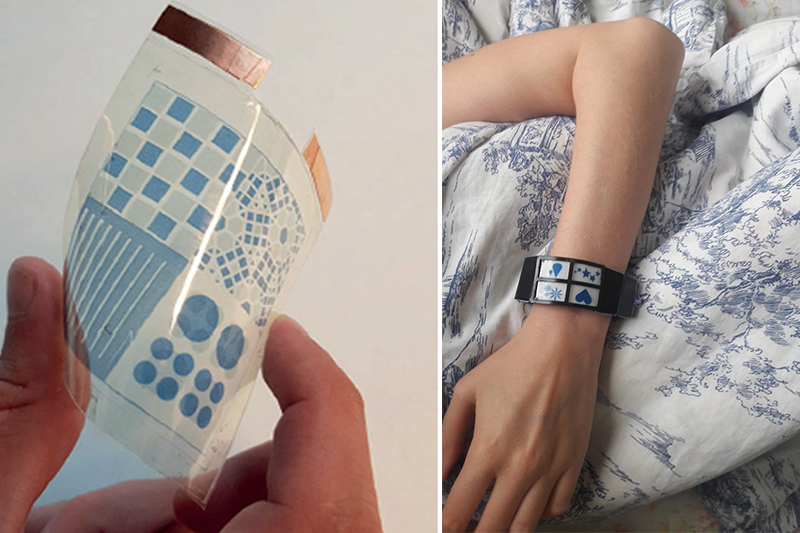Always with me
Co-design workshop and low fidelity prototype

Simple and low bandwidth communications on computers has been found to promate intinacy between couple, what if such minimual communications are packed in forms of wearables. This work explors this concept further through a co-design workshop, lo-fidelity proprototyes, and a diary study.
Co-design workshop
In the workshops, we invited 16 participants who were at the moment in the middle of long-distant relationship to explore potential of wearable devices in facilitating interactions and communications with their partner. We introduced them to the concept of low bandwidth display (DecoChrom). Then, the participants worked in groups to design a wearable device that they would like to use based on the technology and later roleplayed how they envisioned their device being used and why it is useful for certain scenarios
Lo-fi prototype and Diary study

We bult 4 lo-fi prototypes based on the ideas from the workshops. We invited 8 participants (2 for each design) to use the prototype of their idea for 2 days. Our goal was to gain a rich understanding for The For the 2-day, we sent them questions through WhatsApp and asked them to report back as text and pictures of how they feel about the device if they would use it to send and receive message with their partner and how they feel about using the device as they go about doing their day-to-day activities.
Summary of the findings
Unlike for computer, low-bandwidth communication on wearable devices has a challenge of user not noticing a message when received, especially if it is in a form of, for example, a necklace. This potentially decreases the feeling of being passively connected. Having only the display is not enough. The participants thought that having a virating module would greatly improve the prototype. While a ring form factor is more visible and more noticeable compared to the necklace, the form raised a usability issue related to intention of interaction. The ring does offer intuitive interactions, but it is also prone for unintented interactions, which makes the message less special.
This is one of my postdoc reserach at the University of Lapland, Finland, together with Hong Li, Emmi Harjunieni, Heiko Müller, and Jonna Häkkailä.
Read more about the work in my paper